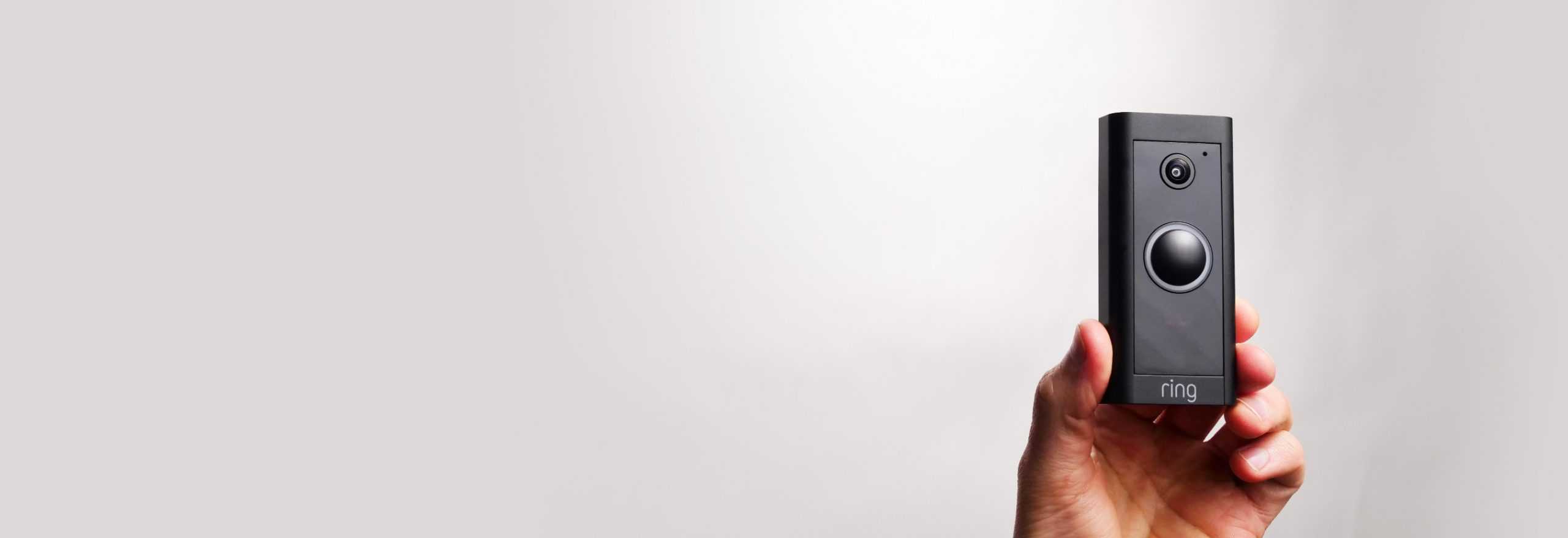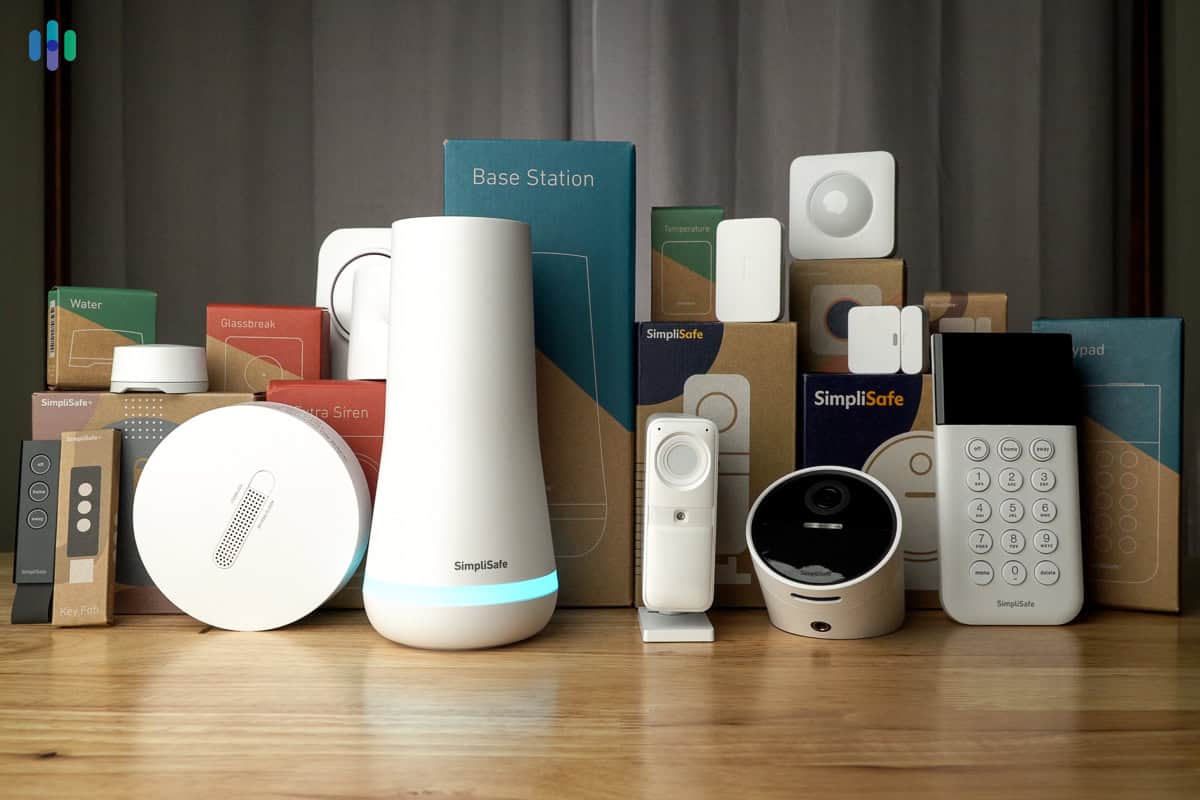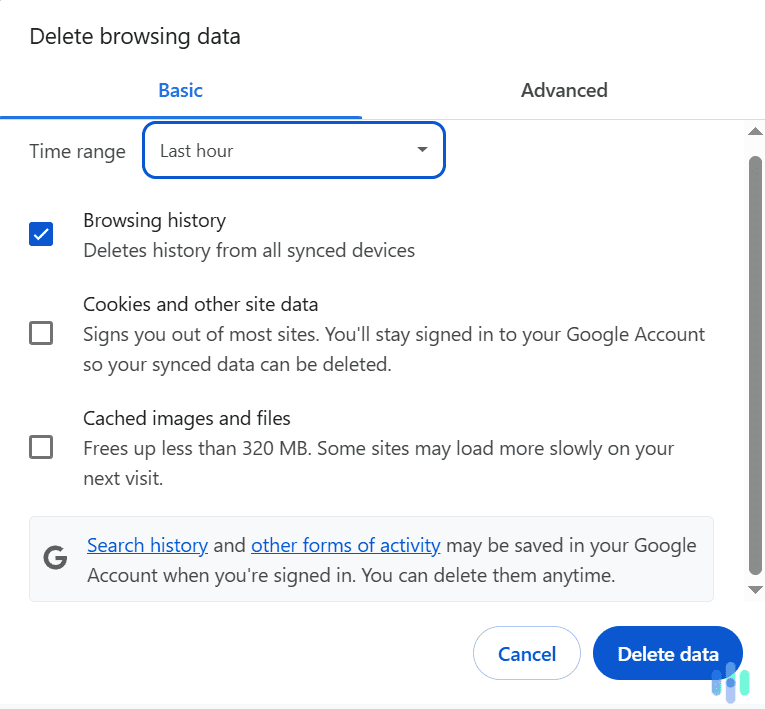Your home is supposed to be the safest place for you and your family, but burglars and home invaders threaten that safety. It’s not only that they take what’s not theirs, but they also invade your personal space. Experiencing a burglary or home invasion can shatter your sense of security.
We know how scary a home invasion and burglary can be. We’ve interviewed victims and some of us in our team have experienced being burgled ourselves. And so, we want to make use of this platform we created to help everyone protect themselves from burglars.
On this page, our security experts chimed in and rounded up a complete list of tips for keeping your residence secure, including a few unconventional ideas most homeowners may not have considered before.
Security System Finder
By answering a handful of easy questions, you can discover the security system that’s perfectly tailored to your needs!

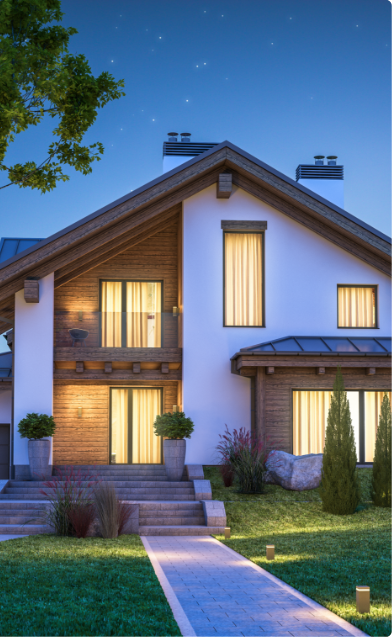
How To Protect Your Home From Invasion
Let’s get right to point: The best way to make your home safer is to improve your home security both inside and outside. That means getting your indoor security and outdoor security in order.
Securing Things Outside
The outside of your home is your first line of defense. It’s also the only part of your home burglars can actually see. If your house seems like an impregnable fortress, thieves will be more likely to move on to the next one. Consider these suggestions for taking your outdoor security up a notch:
The very best solution is to install an outdoor security system. Home security systems have a number of linked electronic components that work together to protect homes.
An outdoor security system can include the following:
- Door sensors: Door sensors let you know anytime anyone opens a door.
- Window sensors: Window sensors work just like door sensors, sending you alerts if anyone tries to raise a window.
- Glass-break sensors: Glass-break sensors detect frequency or shock waves and can tell you the moment a window breaks.
- Motion sensors: Motion sensors send alerts anytime they detect movement. The best motion sensors can distinguish between actual intruders and harmless things like animals, cars, or blowing leaves.
- Siren: You can attach a siren to a motion sensor or use it independently to startle anyone trying to break into your home. We recommend getting strobe siren (siren with strobe lights) for outdoor use.
- Yard sign: If you’ve invested in a home security system, you should let criminals know. A yard sign tells would-be burglars that getting into your home would be more trouble than it’s worth.
There’s one other outdoor security component you should consider adding, and it’s the most important of them all – outdoor security cameras.
Security Cameras for Outdoor Security
- Think about what kind of camera you need. Do you prefer wireless outdoor cameras, for instance, or wired? Consider weather conditions in your area and choose a camera that has a suitable IP rating. IP ratings tell you how weather-resistant a piece of technology is. An outdoor camera should have a rating of at least 65, which means the camera is resistant to dust and water projected by a nozzle. At the top rating of 68, cameras can withstand dust, dirt, and sand, as well as water immersion up to a meter deep. Also research camera features, such as zoom, two-way audio, and infrared night vision.
- As with outdoor lighting, you want to be savvy about installing your outdoor cameras. Make strategic decisions about where to place cameras. For instance, install them at least 8 to 10 feet off the ground. This will give you better visibility and, as a bonus, make it harder for burglars to steal the cameras.
- Consider hiding some of your outdoor cameras. Security cameras that are visible can work as deterrents, but hidden cameras are more effective at catching criminals in the act. It pays to have a mix of hidden and visible cameras.
- Place cameras so you can see all your home’s entry points (doors and windows). By doing so, you’re virtually making sure no one enters your house unnoticed.
- Keep in mind where you place your cameras in relation to the position of the sun. Security cameras don’t capture good footage when there’s too much glare, plus, being under direct sunlight too much will shorten the camera’s lifespan. If it’s unavoidable to place the camera under the sun, consider giving it a makeshift shade.
- Clean your cameras regularly, since pollen, cobwebs, and other debris can cause blurry images.
Tying Together Your Outdoor Security
Having that many components for your outdoor security might seem overwhelming, but those pieces don’t necessarily have to work on their own. You can buy them all from a single supplier and tie them together into a single, comprehensive security system. You can even decide how you want them monitored:
- Self-monitoring: The best self-monitored security systems send you alerts the moment they detect something’s wrong. You can then livestream with your cameras and decide how to respond to the situation. Self-monitored systems often don’t come with a monthly fee.
- Professional monitoring: You can do the same with a professionally monitored system, but you also get a monitoring service to back you up 24/7. You pay a monthly fee for such services, which can range from $10 to $60, but in our expert opinion, it’s totally worth it. The peace of mind in knowing someone will call for help on your behalf is priceless.
Pro Tip: Do you need a security system? We think so. Most homeowners need a security system, so we listed all the best security systems we recommend. However, keep in mind that a security system is a significant investment. Besides the equipment and monthly cost, security systems aren’t tax deductible, and you might need an alarm permit from your local government.
More Outdoor Security Tips
Aside from having an outdoor security system, here are some useful tips for keeping your outdoor security as tight as can be.
- Take the burglar’s point of view. A good way to discover any weaknesses in your home security is to look at your home the way a burglar would. Take the time to walk the perimeter once or twice a year, imagining you need to get inside desperately. How would you go about it? If you can come up with a good answer, you can bet a burglar will come up with that answer as well.
- Install adequate lighting. Shadowy areas around your home offer places for burglars to hide while they look for entry points. Well-placed lighting can eliminate such hiding places, making your home safer. Carefully consider where you place lights so you can see what’s happening in your yard without annoying your neighbors. The most important spots to install lights include your front door, your garage, and your driveway. Install smart light bulbs so you can turn lights on and off from your phone. Many of these bulbs have built-in motion detectors, so they snap on when you need them and stay off when you don’t.
- Control your entryways. Burglars can’t walk through walls; they need to use entryways to get into your home. Beefing up your security, then, means making sure these entry points are well protected. Exterior door sensors, window sensors, and glass-break sensors alert you the moment anyone tries to get in so you can contact the police. Keep doors and windows locked as often as possible. It’s also a good idea to establish an evening routine of walking through your home and making sure everything is locked and secure. Finally, sliding glass doors can be weak points in your home security. Obviously, a thief can break the glass, and many glass doors come with weak locks.2 At your local hardware store, purchase lock bars that sit in the tracks of your door to prevent it from opening. Another option is shatterproof film, which makes the glass harder to break when you apply it.
- Eliminate hiding spots. Cameras and outdoor lighting are important, but you also want to make sure there aren’t any places in your yard to hide. Many people use bushes and trees to provide privacy from their neighbors and increase curb appeal. Those same bushes and trees can conceal burglars looking to sneak up to your home. Thin out dense bushes and prune tree branches regularly to make sure you have a clear view of what’s happening in your yard.
- Eliminate anything a burglar might climb. If you have a two- or multi-story home, lock any ladders in your garage or storage shed when they’re not in use, and cut back any trees close to the house. Burglars can use ladders or trees to access second stories and beyond. If you have a smart garage, be sure to hide your garage door opener; burglars often enter homes through garages. You should also keep your home safe with a garage security system.
- Store expensive items out of sight. A thief doesn’t necessarily have to break into your home if you leave expensive items on your lawn or patio for them to steal. Put expensive tools, lawn mowers, and grills in the garage or in other locked storage so no one can steal them easily.
- Don’t hide keys around your home. Hiding keys around your house is a bad idea. You may think you have the perfect hiding spot where no one would think to look. If you thought of it, though, so could a thief. Smart locks are a great solution to this problem, allowing you to give out passcodes to anyone who might need to get in, or let guests in yourself using an app.
- Change your locks. Of course, remember to change your locks anytime you move. That way, you know exactly who has keys and the codes to your smart locks. For more information, see our guide to the best smart locks on the market.
- Keep your house numbers bright and visible. In the unfortunate event that someone breaks into your home, you’ll want the police to have an easy time getting to you. House numbers are crucial for the police when they’re trying to find your house. Make sure your numbers are reflective so they are visible even in the dark. They should also be at the street or visible from the street — and visible from any arrival direction.
- Don’t advertise your name. It may be cute to put your name on your house or your mailbox, but this provides more information for thieves to use against you. With a name, thieves can discover what items of value you might own or check social media to learn when you might be away.
- Build a fence. Fences, whether they’re wooden privacy fences or simple chain-link fences, are important additional barriers.
- Secure your car. You can lock your home down like Fort Knox, but if you leave valuables in plain view on the seats of your car, you create an easy opportunity for thieves to smash and grab. You should secure your car from break-ins just as you secure your house.
- Check the mail regularly. You may actually be home, but if you don’t check your mail regularly, thieves will get the impression that you’re away. When thieves think you’re gone, your home becomes a more tempting target.
- Maintain the lawn. A disordered, unkempt lawn can also signal you’re away. Mow it regularly yourself or hire a lawn service.
- Take out the trash. Similarly, a full trash can suggests you may not be home. Also avoid putting boxes of big-ticket items on the curb, since these let burglars know you’ve got something new worth stealing.
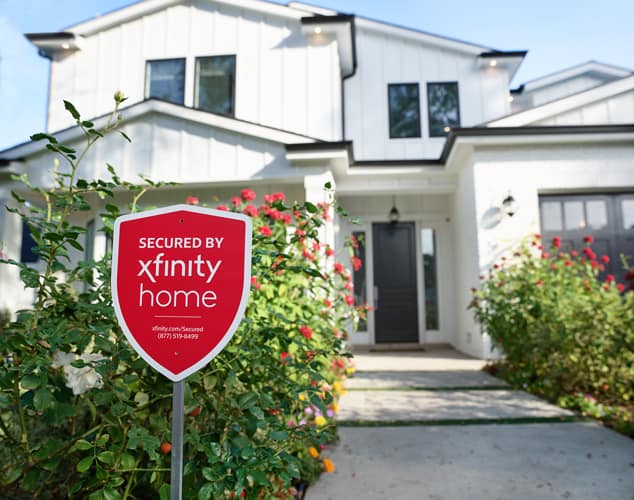
Securing Things Inside
Those tips we gave above about getting a security system apply to the indoors too. If your doors and entrances are well-covered from the outside, the inside of your house is also protected. But for extra good measure, follow these simple indoor security tips.
- Install indoor home security. As with the outside of your house, the best way to protect the inside of your home is with a security system. These are some indoor home security components:
- Indoor security cameras: Like outdoor security cameras, indoor security cameras allow you to see exactly what’s happening around your home.
- Door sensors: Door sensors work great at entry points, but you can also use them within your home. Put them on your children’s doors, for example, or on the door to a storage closet.
- Motion sensors: As they do on the outside of your house, motion sensors alert you to any unusual movements within your home.
Live in an apartment and don’t need outdoor security? Check out our list of the best security systems for apartments.
- Use the peephole. Never open the door to someone without checking first to see who it is. Once you’ve opened the door, even a crack, an intruder can force their way in. Remind your children never to unlock or open the door for strangers. You can also install an electronic peephole or a video doorbell. These devices allow you to see who’s at your door without actually standing, vulnerable, in front of the door. A good video doorbell even allows you to talk with whoever’s standing out there. You might just convince them you’re home when you’re actually at the office. (Just a note — if you have a peephole and are looking to add a video doorbell, only the Ring Peephole Cam will work.)
- Leave your TV and/or radio on to avoid an empty appearance. There are various ways to make it look like you’re home and awake, even when you’re not. Leave a radio or TV on, for instance. Even better, invest in smart home devices and create schedules that make the activity in your home seem natural. You can even purchase TV simulators that produce light and mimic real televisions.
- Keep valuables away from windows. Keep your expensive items away from windows so thieves can’t see or make off with them easily. You might also consider putting privacy film on your windows so that even if there is something there, thieves can’t see it.
- Keep valuables in a lockbox or safe. Keep your most valuable items, such as jewelry, in a lockbox or safe. You can also store them in a bank’s safe. If your most precious belongings are locked up, thieves can’t get to them even if they manage to get inside your house.
- Be consistent with curtains and blinds. There are divided opinions on this particular issue. Some argue that keeping your curtains and blinds open tells potential burglars you’re at home, deterring them from choosing your home. Others insist that leaving your curtains and blinds open means thieves can take inventory of what you own. Whichever way you lean, it’s important to be consistent. If you usually leave your blinds open when you’re at home, don’t shut them suddenly when you’re gone. For an even better solution, install motorized blinds. You can raise and lower motorized blinds from anywhere in the world using an app so that burglars will always think you’re home. Don’t forget about curtains for your garage and basement.
- Don’t label your keys. Searching for the right key in a drawer full of junk can be frustrating, and labeling keys can help. However, clearly labeled keys may also allow thieves to access storage closets and lockboxes, getting away with more valuables. If thieves do somehow get into your home, don’t make it easy for them by labeling your keys.
- Etch your name onto belongings. It’s harder to sell stolen televisions or computers if they have someone’s name etched into them. You can purchase a simple engraving at your local hardware store or Amazon and label your valuable possessions.
- Lock down your Wi-Fi network. Your Wi-Fi is a potential entry point into your home, especially if your cameras or security system operates on it. Protect your network with secure passwords. Ideally, passwords should be at least 12 characters long and use a combination of letters, numbers, and symbols.
FYI: It takes the average burglar less than a minute to get into a home and eight to 12 minutes to take what they want and get out again.3
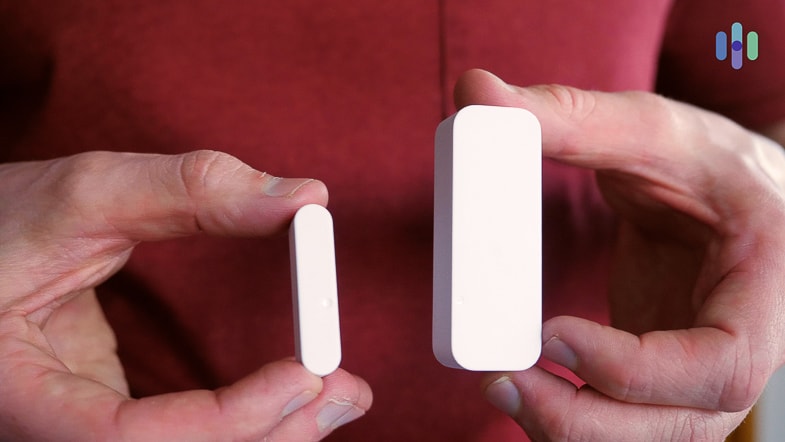
Even More Home Safety Tips
Beyond making physical changes to your home, here are a few additional tips and best practices to keep you safe from home invasions:
- Buy a pet. A dog or other pet can make a lot of noise when someone shows up at your house. Equally as important, burglars expect pets to make noise, so they’ll avoid houses with dogs. The downside of pets is that they can sometimes trigger security alarms. If you have or are going to get a pet, it’s a good idea to look for cameras and systems that can recognize the differences between a cat burglar and a cat. You can find detailed information in our lists of the best cameras for pets and the best security systems for pet owners.
- Get to know your neighbors. Good neighbors keep an eye out for one another, paying attention to who’s on their streets and sidewalks and talking to each other about it. The better you know each other, the better you can protect each other. All home invasions begin with suspicious activity, after all.
- Don’t overshare. While it’s good to get to know your neighbors personally, don’t share information about your home or belongings online. This information can become an inventory for thieves. Beyond the dangers of home invasion, oversharing can put you at risk of identity theft. Oversharing can be a particular temptation if you have children. As we note in our research on parents’ social media habits, 75 percent of parents share information about their kids online. Eight out of 10 of those parents also have followers they don’t know. This can be a recipe for child identity theft, which 14 percent of parents say their children have been victims of.
- Hire with caution. Reputable contractors and other home professionals are licensed, bonded, and insured. Ask to see contractors’ licenses, insurance certificates, and surety bonds before you hire them. It’s also a good idea to check their references. One quick way to verify this information is by contacting the Better Business Bureau. You can visit the Better Business Bureau online at BBB.org or contact your local chapter by phone. Apps such as Angie’s List, HomeAdvisor, and Yelp can also help you track down reliable contractors.
- Use a shredder. We don’t normally think of someone going through our trash; that’s gross. A burglar, though, will stop at nothing to find out if your home has something worth taking. One receipt in the garbage can tell them everything they need to know. Shred any documents that might have personally identifiable information (PII), such as the following:
- Names
- Addresses
- Social Security numbers
- Telephone numbers
- Email addresses
- Bank account numbers
- Credit card numbers
- Medical histories
- Prescription information
- Tax histories
THE MORE YOU KNOW: According to the U.S. Department of Justice, homes without dogs are, on average, 27 percent more likely to be burglarized than homes with dogs. Even if you don’t have a dog, a “beware of dog” sign in your front yard is still a good idea!
Protecting Your Home While You’re on Vacation
Your home is most vulnerable when you’re on vacation, since no one’s at home to make a fuss. For that reason, going on vacation requires extra steps to protect your home.
- Make a plan. Before you go away, sit down and think through all of the potential problems that might arise while you’re gone. This list should include many of the suggestions we made above, such as making sure your mail gets checked, your trash gets taken out, and your lawn gets maintained. Talk to neighbors and ask friends and family to help with these tasks so that your home looks lived in even when no one is actually there.
- Double- and triple-check locks. Before you walk out the door, physically walk to each window and door to make sure they are locked. As we mentioned before, many burglaries happen simply because a door or window is left unlocked. By the way, the strongest type of door lock is a deadbolt, according to locksmiths.
- Use smart lights. You can set up a schedule with smart lights to give burglars the impression you’re at home.
- Don’t advertise your trip. You may be tempted to brag to everyone at work about where you’re heading for the weekend, but the more people know you’re going to be away, the better the chance of that information winding up in the hands of a burglar.
- Stay safe wherever you roam. Just because your home is protected doesn’t mean you can rest easy. If you’re heading to a vacation home, for example, you may want to consider adding a security system there as well. Check out our list of the best security systems for vacation homes for more information.
For an even more thorough discussion, read our guide on how to protect your home while you’re away.
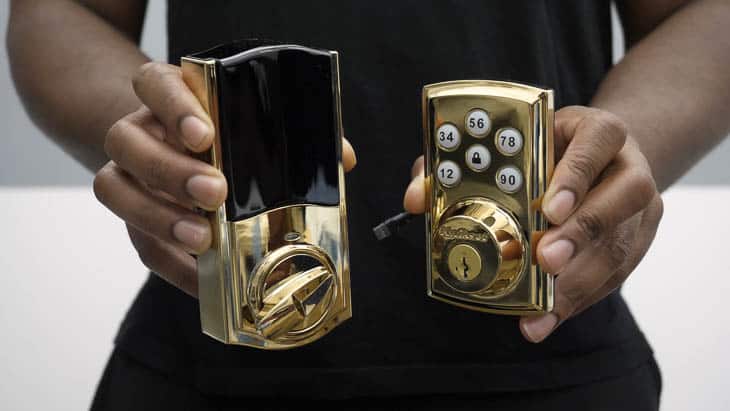
Items Thieves Look For
If you know what thieves look for, typically, you can protect these items by keeping them away from entryways or locking them up. According to that same study from the University of North Carolina, thieves are most often after these items:
- Clothing
- Prescription drugs
- Electronics
- Illegal drugs
- Jewelry
- Cash
Insurance Benefits for a Safer Home
Improving the security of your home has obvious advantages for your safety and the safety of your possessions. It can also save you money on your homeowners insurance. These top companies all provide discounts for installing home security devices, including burglary alarms, smoke detectors, CO detectors, and sprinkler systems.
| Insurance provider | Home security measures that can get discounts |
|---|---|
| Allstate Insurance | Protective device discount |
| State Farm Insurance | Home security insurance discount |
| Farmers Insurance | Protective devices discount |
| Nationwide Insurance | Protective device discount |
| Travelers Insurance | Protective device discount |
Other companies encourage installing home security systems in other ways. USAA, for instance, works with ADT and offers a discount on ADT equipment.4 In the end, whatever insurance company you use, there’s likely to be a discount that will help defray the cost of the system itself.
Recap
Nothing matters more than the safety and well-being of your family and your belongings. Don’t risk that safety to home invasion. By following the suggestions we’ve outlined here, you can not only protect yourself, but minimize the risk that your home will ever become a target.
FAQs
Still have questions about how to protect your home from invasion? We’ve answered some of the most common ones here.
-
How do burglars decide whether a house is worth burglarizing?
Burglars use various tactics to case houses. They may sit in cars on your street. They may walk or jog along your sidewalk to get a closer look. Particularly industrious thieves may actually knock on your door, pretending to be salespeople, to find out what kind of alarm system you have or what valuables are sitting out.
-
What do you do in case of a home invasion?
In case of a home invasion, you should:
- Make sure you actually heard an intruder and not some other noise.
- Remain calm.
- Give the intruder space by moving away from the noise.
- Look for a means of escape.
- Call 911 for help.
-
Does leaving a light on at night deter burglars?
Leaving a light on at night does not deter burglars. If a burglar recognizes that a light is always on, the light becomes a help rather than a hindrance, lighting the thief’s way. A much better approach is to install smart, motion-activated lights. You can even create lighting schedules to make burglars think you’re awake and roaming around.
-
What are the chances of a home invasion?
The FBI estimates that your chances of a home invasion are 1.8 percent, but that’s a very rough estimate. That number comes from dividing the number of home invasions each year (2.5 million) by the number of households in the U.S. (139 million, according to the U.S. Census Bureau). The true likelihood that you will be a victim of a home invasion depends on several factors, including your geographic location and the security measures you have in place. If you live in a high-crime area and do nothing to protect your home, your odds of a home invasion are considerably higher than 1.8 percent. If you live in a region with relatively little crime and protect your home well, the chances you will be a victim could be virtually zero.

